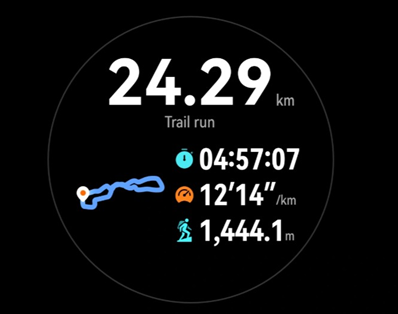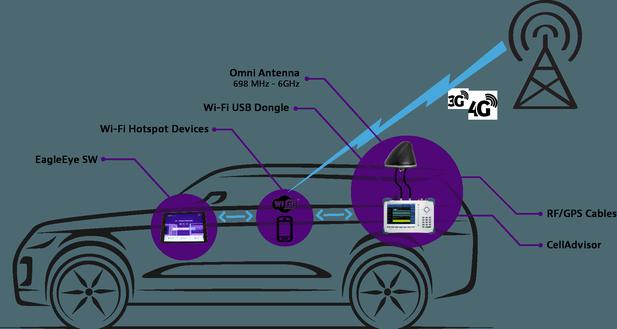Modern information technology
Introduction
Modern information technology is formed by the combination of computer technology and telecommunications technology based on microelectronics. Active technology for acquiring, processing, processing, storing, disseminating and using information from various sensor signals. Its core is informatics. Modern information technology includes ERP, GPS, RFID, etc., which can be understood and learned from ERP knowledge and application, GPS knowledge and application, EDI knowledge and application. Modern information technology is a very broad technology group, which includes microelectronics technology, optoelectronics technology, communication technology, network technology, sensing technology, control technology, display technology, etc.
Abstract: This article analyzes the positive impact of modern information technology on urban development such as urban planning, urban industrial structure, urban spatial layout, urban functions, urban transportation, urban architecture, urban management, and urban residents’ lifestyles At the same time, it also analyzed some negative effects of modern information technology on urban development.
Major advances in technology often have a huge impact on the development of cities. The invention of the steam engine led to the initial industrial revolution and the development of urbanization; the popularization of automobiles led to the suburbanization of cities.
The role of modern information technology (3 photos)
Modern information technology represented by computer and its network technology and modern communication technology is the development of contemporary science and technology Dominate the field. Modern information technology is advancing at a speed that has never been seen in other technologies, and is involved in all aspects of society with a depth and breadth that has never been seen in any other technology. "The 20th century, especially the memorabilia since the Second World War, no matter how concise, will never ignore the tremendous progress of information technology and its extensive economic and social impact." So, what is the impact of modern information technology on the development of cities? What is the impact?Positive impact
The world today is moving towards the information age. Information has become the "blood" and "lubricant" of social and economic development; modern information technology has widely penetrated and changed people Life, study and work; the information industry is gradually becoming the world’s largest industry. Under the impact of this global informatization wave, many aspects of urban development such as urban planning, urban construction, urban management, and the traditional form and function of the city have also been strongly influenced by modern information technology. Facing new development opportunities.
The scientific nature of urban planning
Urban planning is the fundamental basis for urban construction, an important means to guide urban construction and implement urban management, and play a leading role in urban development. Modern information technology has expanded the theory and practice of urban planning, updated the methods and means of urban planning, greatly improved the labor productivity of planners, and the scientific, artistic and creative aspects of planning and design, and strengthened public participation. Future urban planning should fully consider that the "smart city" that will be formed in the era of information civilization is a reorganization of urban spatial structure different from any previous era; it must be based on geo-information science, human settlement science, and regional sustainable development as theories. And method basis to reflect urban planning:
1. Ideal, rational, integrated, system, dynamic, and ecological ideas;
2. Multi-level regional-based Human settlement environment is the focus;
3. Decision support methods.
Huge changes in the industrial structure
This is mainly reflected in three aspects: 1. On the basis of modern information technology, a large number of emerging industries that were not available in the past have been produced; The transformation of traditional industries has made it obvious that traditional industries have traces of informatization, thus gaining a new way out; 3 the vigorous development of the service industry has shown a trend of replacing the manufacturing industry in the national economy. In short, the urban industrial structure has begun to transform from the traditional industrial economic model to the emerging information economic model. In addition, corresponding to the transformation of the urban industrial structure, urban employment has shown the characteristics of "softening", which means that the proportion of people engaged in "soft occupations" such as management, research, technology development, consulting services, education, etc. in the employment structure has increased. .
Transformation of urban layout structure
From agglomeration to agglomeration and dispersion. The industrial revolution that broke out in the 18th century caused the concentration of capital and population in cities and began the process of modern urbanization. The development of cities is mainly manifested in a trend of centralization. This centralization is based on the economies of scale and agglomeration of the manufacturing industry. Conditioned on the improvement of transportation technology.
However, with the development of modern information technology, information networks will enable urban residents to break through time and space restrictions in their work, education, life, shopping, medical treatment, and entertainment. The dependence on transportation tools has been greatly reduced; the dependence of some industrial production on resources and the highly concentrated production scale has also been reduced, weakening the motivation for agglomeration. This greatly broadens the city's activity space, enables the city to extend the geographical distribution of its various functions, and the urban spatial layout structure also shows a trend of diffusion.
Under the overall trend of diffusion, cities also have a certain degree of agglomeration. As modern society is becoming more and more complex, higher-quality coordination and cooperation are required, which requires the reintegration of various functions of the city in the central area.

Modern information technology enables urban development to choose its scale and spatial structure more freely according to their needs. The trend of proliferation will guide the dispersion of industries and populations in cities, especially megacities and large cities, and make some industrial functions relocate. Some new industrial production areas and urban clusters have appeared in the periphery of cities. The functional structure of cities will be purified and spatial divisions will be improved. For clarity; the trend of agglomeration has promoted the further development and prosperity of the central area, and the function of the urban center has become more powerful.
The functions of the information center are strengthened
On the one hand, the emergence of modern information technology provides advanced technical conditions for information processing and provides convenience for people to use orderly information; on the other hand, On the one hand, the emergence of modern information technology has accelerated the generation and transmission of information. The city is the center of regional social and economic activities. The service level of transportation, communication, science and technology, mass media, etc. is superior, and the information exchange is convenient. It provides good objective conditions for the development of the information industry. At the same time, the strengthening of the central position of the city also requires information. The development of the industry is accelerating. As a knowledge-intensive emerging industry, the information industry must first rise in cities. With the rise of the new technological revolution, cities are not only the distribution centers of people and logistics, but also the places for creating, obtaining and disseminating information. Information is a resource and wealth. The level of information development and service, and the development of the information industry have become important indicators of the level of urban social and economic development. With the continuous development of the information network, the socialization of information services, the industrialization of the information industry, and the modernization of the information market have provided cities with the best environment for the development of the information industry. Cities at all levels will gradually become the centers of information circulation management and services in different regions, especially the functions of information centers in large cities and megacities will be strengthened day by day. In short, corresponding to the development process of human society from the agricultural society to the industrial society and then into the information society, the development history of the city will also go through the evolution process from the political center to the economic center to the cultural information center.
Urban traffic problem
Urban traffic problem is one of the imbalances in the process of urban growth and development. The traditional way to solve traffic congestion and congestion is to develop a collective transportation system and restrict private The development of automobiles, the increase in the density of the road network, etc., are all just "scratching" and "treating the symptoms but not the root cause." With the development of modern information technology, it is possible to fundamentally solve this problem. First of all, urban traffic problems arise from the imbalance between the ever-increasing traffic volume and the lagging transportation facilities. Modern information technology has enabled human beings to cross the limitations of time and space, changing the way people communicate and interact with the outside world, and the number and frequency of travellers in the city. Reduce, the total traffic volume of the city will inevitably decrease; secondly, modern information technology will greatly improve the service level of existing transportation facilities. Through the establishment of an intelligent transportation system ITS, it will solve the problem of "information in people and vehicles--visible environmental information outside vehicles--" The information transmission and exchange processing of the "environmental information invisible outside the vehicle" system can carry out a comprehensive and dynamic coordinated control of the city's traffic flow, so as to realize the high efficiency of urban traffic. Based on the above two points-the decline in traffic volume and the improvement of the service level of traffic facilities, supplemented by guiding traffic policies, the urban traffic environment will be greatly improved, and the traffic services will be efficient and fast.
Make urban buildings intelligent
Modern information technology is combined with modern building technology to give modern buildings new concepts and more functions. The world's first smart building was built in Hartford, Connecticut, USA in 1984. Now smart buildings have become a symbol of urban modernization. Generally speaking, intelligent buildings have functions such as office automation, building automation, communication automation, fire protection automation, and security monitoring automation.
Developed urban management
We know that a city is a large social, economic, and natural complex system. Urban management is a comprehensive system involving a wide range of areas, multiple variables, multiple levels, and multiple goals. Sexual management, traditional management methods have become increasingly unsuitable for the more complex and changeable trend of urban development. Modern information technology can provide a variety of background information very quickly, reducing information distortion caused by backward communication methods, simple methods and postal errors, so that decision-making can be more scientific, precise and timely. Urban management and monitoring methods will become more advanced and developed. With the help of computer networks, urban construction and management can truly get rid of "rule of man" and embark on the track of "rule of law".
Impact the lives of urban residents
Modern information technology not only affects the tangible aspects of the city, but also has an impact on the intangible aspects of the city.
The information network makes "remote office", "remote teaching", "online shopping, medical treatment, and entertainment" a part of people's daily life. It also strengthens the exchange of information between people and promotes cultural diversity and diversity. Can express their wishes to the society more conveniently, and the management society that participates in public affairs will further move towards openness and democratization
Negative influence
The development of science and technology is like a double-edged sword The sword, on the one hand, brings light to the future of mankind and makes people look forward to the future; on the other hand, it also casts a shadow on the future of mankind, making people worry and worry. The negative impact of modern information technology on urban development is mainly manifested in the following aspects:
Deterioration of the ecological environment
The development of modern information technology has caused people to choose the standard of residence from focusing on urban space location. Pay attention to the living environment. This will accelerate the evacuation of urban population to the countryside, and will make the remaining forests, wilderness, and rare animals and plants disappear more quickly. This requires the government to strengthen the management of environmental protection.
The employment pressure of the population
Although it is still controversial whether the jobs created by modern information technology are less than the jobs it replaces, the development of modern information technology makes the employment structure of the society more The development of the intelligent trend is a consensus. So at least modern information technology will lead to structural unemployment. The fundamental way to solve this problem is that people want "lifelong learning", which requires the convenience of the urban education information network.
Unfair distribution of information
The information superhighway can minimize the spatial difference of regions. However, because the construction of the information superhighway is time-sequential, the regions it reaches are preceded by Later, this resulted in unfair distribution of information between regions, and the gap between urban and rural areas may widen. Urban planners in big cities should fully realize this point and consider the construction of information superhighways.
Isolation is becoming more serious
In an industrial society, people’s choice of place of residence often depends on the three factors of transportation distance, environmental conditions, and personal income. In the information society, people’s place of residence Mainly depends on the environment and income, and income mainly depends on the level of intelligence, which will inevitably lead to further division of the population, severe isolation in the urban space, and therefore destroy the reasonable social structure.
The information environment faces problems
Modern information technology has brought efficient and convenient information services to mankind. At the same time, it has also caused the human information environment to face many unprecedented problems, such as the infringement of privacy rights. Issues, intellectual property issues, information pollution issues, information security issues, etc.
①Zhang Zhengde, "The Development of Information Technology in the United States and Its Economic Impact", Wuhan University Press, 1st edition, August 1995, "Preface" page 1
Technical Application
Information technology is a cognitive tool for learning activities. Information technology can be used as a tool for acquiring course learning content and learning resources, as a tool for contextual exploration and discovery, as a communication tool for collaborative learning and exchange discussions, as Knowledge construction and creation practice tools. It is necessary to make full use of information technology as a tool for advanced thinking training. The application of information technology will evolve from the current operating modes that people pay more attention to computers, networks, and online learning, to the use of advanced thinking skills cultivated by information technology to build knowledge, feelings, and intentions. Integrated high-intelligence learning system.
References
1 Xie Wenhui and Deng Wei "Urban Economics", Tsinghua University Press, 1996 edition
2 Zhang Zhengde, "The Development of Information Technology in the United States" And its economic impact", Wuhan University Press, 1995 edition
3 Fu Jinsong, Ning Hongtao, "Home City. eco-city. Network City "Athens Charter", "Machu Picchu Charter" and Future Urban Planning Concepts", in "Urban Issues", 1998 No. 3
4 Zhan Yunzhou, "Urban Development in the Process of Informatization", in "Urban Issues" 1998, Issue 2
5 Wang Ying, "Analysis of the Negative Effects of Informationized Cities", in "Urban Planning Transactions" 1998, Issue 3
6 Dai Feng et al. "Urban Planning and Information Technology Development and Practice in Guangzhou, China", published in "Urban Planning Transactions" 1998 Issue 3
Li Zhiming: Central China Normal University Information Management Department Chen Junjun: Central China Normal University News Department of Communication
Responsible Editor Zhang Lifu
Latest: Virtual private network
Next: Text








